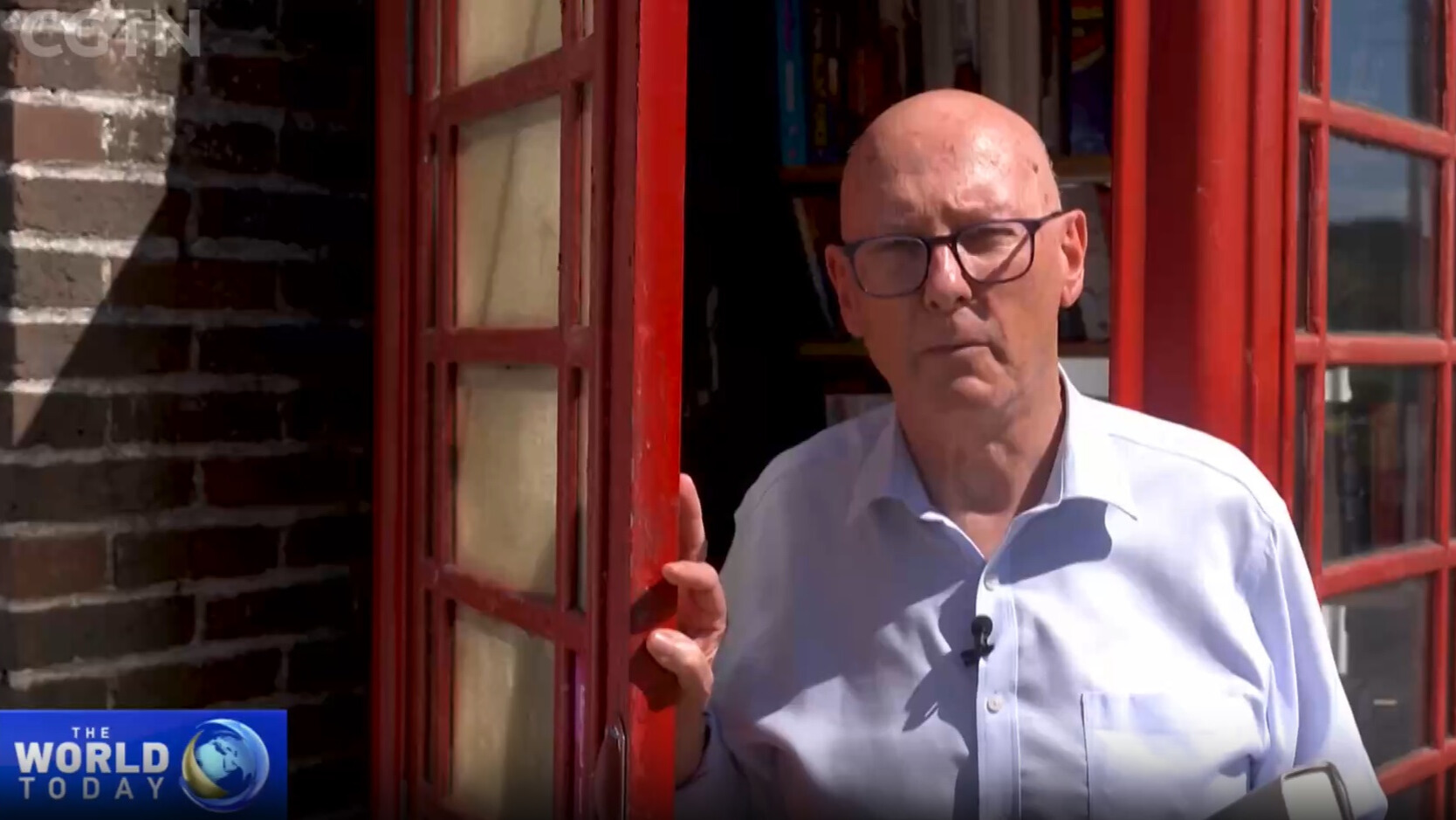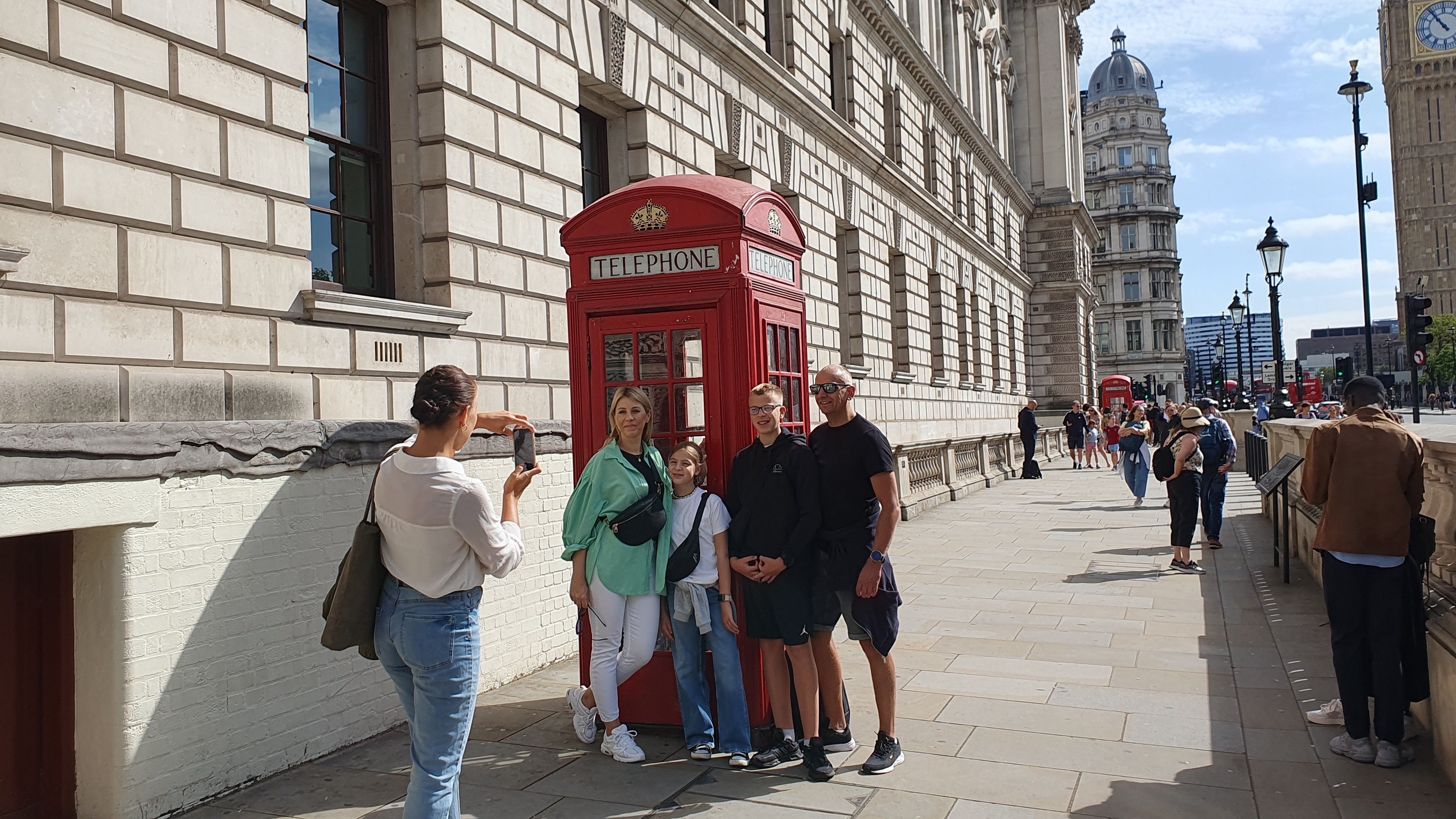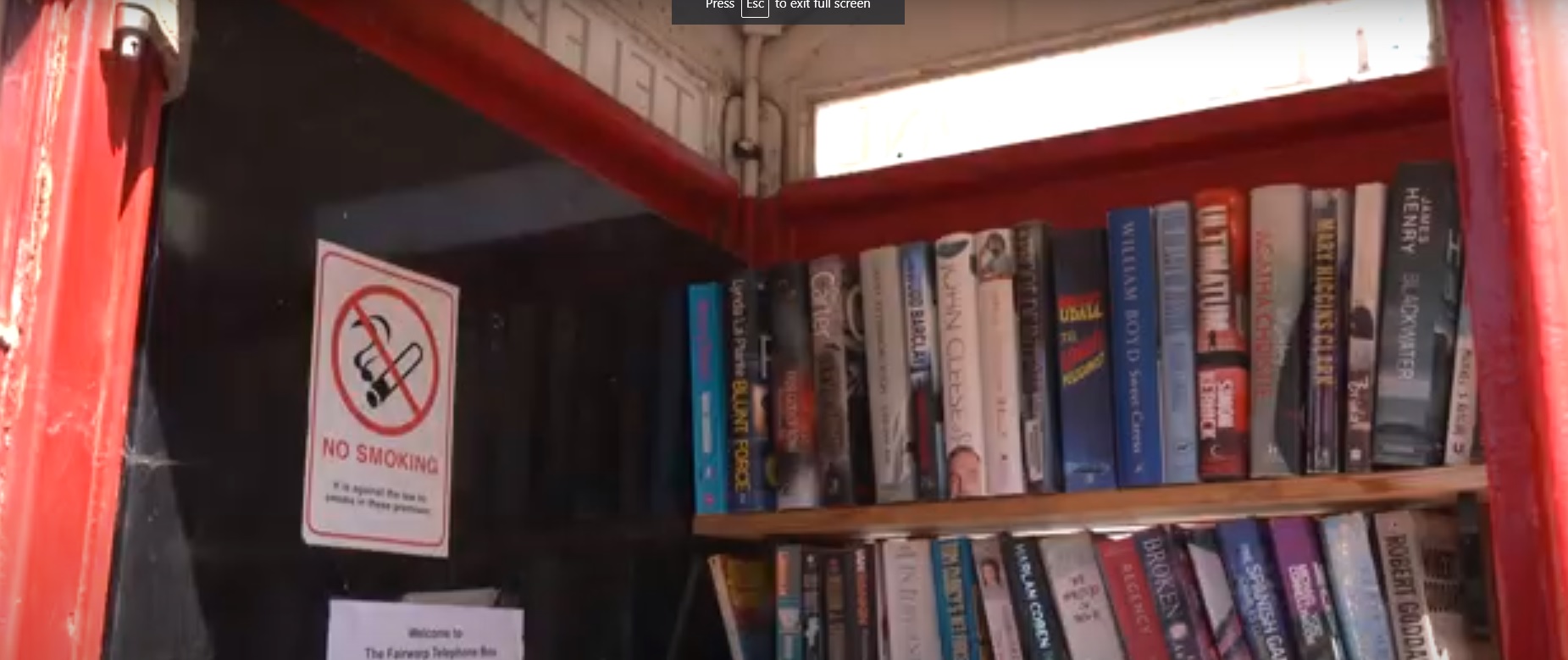02:50

In the UK thousands of iconic red phone boxes have been handed over to local communities and turned into micro-libraries. Fairwarp is a small village in the Sussex countryside about an hour's drive south of London.
It's one of those picturesque English villages with a pub in front of the village green, though the only shop closed long ago. The nearest library is also several kilometers away.
Several years ago the village decided to repurpose an old red phone box that stands outside the village pub and fill it with donated books. Parish Councillor Penny Handley helps to maintain the phone box.
"It's wonderful to keep the phone box because they are an iconic feature and we wouldn't want it to disappear so it's wonderful to have a good use for it," Handley said.
READ MORE
The Belt and Road in Europe
Battle for the bears: fatal attack ignites row
Spain's Hermoso files criminal complaint
Inside, the pay phone has been replaced by book shelves. The majority of donated books are popular fiction, but there are also biographies, non-fiction and a few children's books. There is also a box for old DVDs.

Many of the UK's iconic red phone boxes are being converted into micro-libraries, mini museums and even art galleries./BT.
Many of the UK's iconic red phone boxes are being converted into micro-libraries, mini museums and even art galleries./BT.
Tiffany Wheeler lives in the village, works at the pub and makes regular use of the mini library. She likes reading detective and fantasy fiction.
"It's nice to have our own little library because people can't get around in this village and we don't have a bus service. So what we do is bring in some of our own books and people just swap them around, take as they please and bring some back," Wheeler said.
University graduate Denica Douglas's family recently moved into the village and she was excited to discover the library.
"It's a really good idea, a really good opportunity to try new books or donate some of my own old books. I used to read all the time, but now they are too expensive. I hardly ever buy new books," Douglas said, browsing through the collection.
The original red kiosks were designed for a competition in 1924 by British architect Sir Giles Gilbert Scott. Today, along with red double decker buses, they are some of the most iconic images of Britain known all around the world.
In central London tourists line up to have their picture taken beside one. At its peak in the 1990's there were around 100,000 pay phones in the UK, of which at least 10,000 of them were red phone boxes.
But with an estimated 98 per cent of the adult population in the UK now using mobile phones the need for pay-phones has rapidly declined.

Villagers were permitted to convert the phone box thanks to government regulations that state they can be removed or converted if fewer than 52 calls are made over a 12-month period./CGTN/.
Villagers were permitted to convert the phone box thanks to government regulations that state they can be removed or converted if fewer than 52 calls are made over a 12-month period./CGTN/.
Under government regulations, British Telecom (BT), the business that owns and operates the pay phones, is allowed to remove them if fewer than 52 calls are made over a 12 month period. Rather than scrap the redundant kiosks, BT launched an 'Adopt a Phone Box' scheme back in 2008.
Local councils and registered charities could apply to take one over for just £1, a little more than a dollar. Individuals could also do so if the phone box was on their private property. In Fairwarp it was the pub that purchased it.
Today more than 7,200 red phone boxes have been adopted by communities across the UK. The majority are micro-libraries but there are mini museums, tourist information centers and art galleries. Some have installed defibrillators and others are used as collection points for foodbank donations.
In the village of Compton in Surrey, a local artist decorates the phone box to mark special occasions like the coronation of King Charles, while the interior is a collection point for food parcels. They may only cost a dollar or so to adopt but the community must still pay to restore and look after them.
Martin Craddock is from Nutley, a village just down the road from Fairwarp. He is chair of the parish council which had to spend more than $1,000 to refurbish the red phone box in his village.
"It had to be taken away, it's quite heavy, three quarters of a ton. They had to take the glass out, then shot blast it, paint it and when it came back we fitted shelves for the books," Craddock said, adding that the mini library was well used and much appreciated in the community.
Today there are just 3,000 active red phone boxes across the country and with the centenary of the original design next year, BT has announced that it is placing one thousand of the remaining kiosks up for adoption.

Subscribe to Storyboard: A weekly newsletter bringing you the best of CGTN every Friday